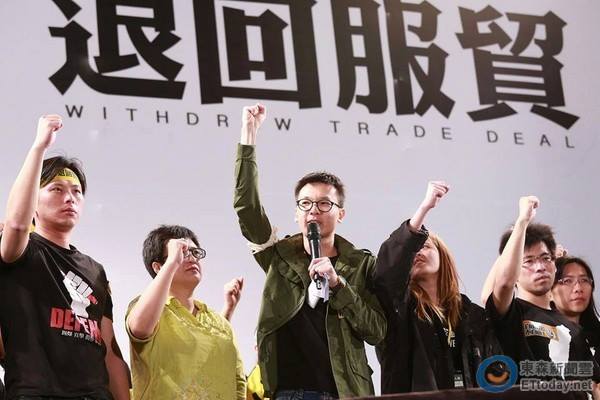 (Photo: Facebook Sunflower Student Movement)
(Photo: Facebook Sunflower Student Movement)
by David Parmer
Protest, confusion, disagreement and stalemate mark Taiwan’s political scene this week. Politics in Taiwan has long been a tug-of-war between the ruling Koumintang (KMT) and opposition Democratic Progressive Party (DPP) but it now looks like the student-civic group coalition known as the Sunflower Student Movement may become a permanent third force in the island nation’s political scene.
Trouble began on March 17, when the Cross-Strait Service Trade Agreement (CSSTA) was voted upon and passed by the KMT majority without a clause-by-clause review. Opponents claim the bill was rammed through in record time using a “black box” maneuver. They objected to the bill because they believe that it gives the PRC more and undue influence on the Taiwan economy, and at the same time will negatively impact Taiwan jobs.
What seemed to be a “done deal” quickly backfired. On March 18, students occupied the main chamber of the Legislative Yuan. On March 23, they briefly occupied the Executive Yuan, but were forcibly ejected by riot police with what some claimed was excessive force. Student demands were laid out by protest leader Lin Fei-fan on March 30. These include:
- Sending back the Cross Straits Trade Service Agreement
- Creating a cross straits monitoring act
- Convening a citizens’ constitutional assembly
- Calling on all legislators to stand by the people
The DPP sided with the students stating that the agreement will make Taiwan more dependent on the PRC, is not transparent and, as mentioned, was rushed through without proper oversight. According to a Taipei Times report on April 2, 2014, the DPP recommended 24 items including banking, printing and publishing be reconsidered. They called for much greater scrutiny and transparency.
President Ma Ying-jeou , in order to resolve the standoff, agreed to meet the student leaders without condition, but his offer was rebuffed. He then proposed a national affairs conference on economics and trade to address this issue. On April 3, Bloomberg reported that Taiwan’s cabinet had approved a bill to monitor agreements with the PRC in hopes of ending the impasse. Protest leader Lin Fei-fan was quoted as saying the bill will not satisfy student demands. The KMT seems determined to stay the course and only make limited concessions, while the Sunflower movement coalition shows no signs of going away anytime soon.
It seems 21st century politics, characterized by the active participation of young people and the use of social media, has come to Taiwan. What was until very recently a two-party game, with the KMT moving toward the PRC economically and the DPP resisting, now has a new player. And if the Sunflower movement does morph into a new political force, it will surely have its own agenda and its own take on the future of cross strait trade and economic relations.
Wall Street Journal analysis of standoff results: http://blogs.wsj.com/chinarealtime/2014/04/11/taiwan-tallies-winners-and-losers-after-political-standoff/
 日本語
日本語 English
English 中国語
中国語